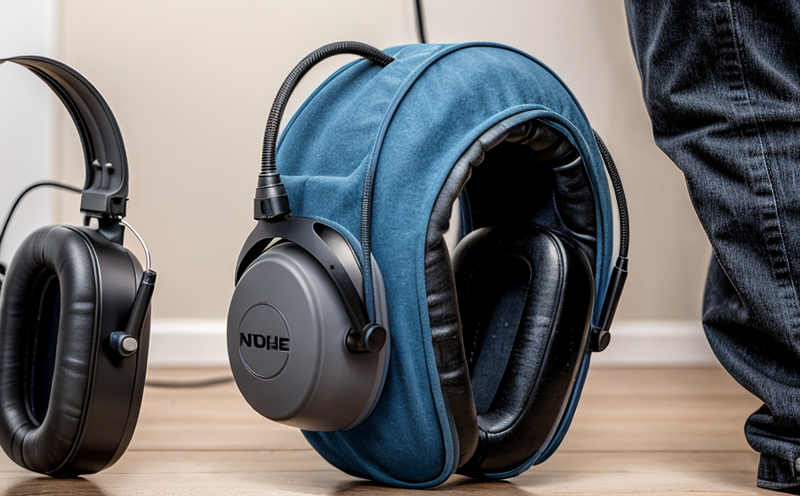ISO 4869-13 Hearing Protector Humidity Resistance Testing
Humidity can have a significant impact on the performance of hearing protectors. ISO 4869-13 provides standardized testing procedures to ensure that hearing protectors maintain their effectiveness when exposed to high humidity environments, which is crucial for ensuring worker safety in various industrial sectors.
This standard specifies the method for determining the resistance of hearing protectors against humidity. It ensures that hearing protection devices (HPDs) can maintain their performance and sound attenuation properties under humid conditions, thereby safeguarding workers' hearing health in environments with high humidity levels.
Testing according to ISO 4869-13 involves exposing the HPD to a specific humidity chamber for a defined period. After exposure, the device is tested for its performance metrics such as noise reduction ratings (NRR) and attenuation values. The test ensures that even in humid conditions, workers are adequately protected against hazardous noises.
The significance of this testing cannot be overstated, especially in sectors like construction, manufacturing, and mining, where high noise levels coupled with varying environmental conditions pose significant risks to worker health. By ensuring compliance with ISO 4869-13, manufacturers can demonstrate their commitment to occupational safety and regulatory compliance.
This testing also supports the R&D process by providing critical data on how HPDs perform under different humidity conditions, allowing for continuous improvement in design and materials used in hearing protection devices. For quality managers and compliance officers, this service ensures that products meet international standards, enhancing trust with clients and stakeholders.
| Parameter | Description |
|---|---|
| Humidity Level | 98% relative humidity ±2%, at 37°C ±1°C for a minimum of 4 hours. |
| Test Duration | Testing is conducted after the HPD has been exposed to the specified humidity conditions. |
| Measurement Method | NRR and attenuation values are measured using ISO-standardized procedures. |
Quality and Reliability Assurance
The quality assurance process for ISO 4869-13 testing involves rigorous calibration of test equipment to ensure accurate measurement. This includes regular verification of humidity chambers, sound level meters, and other instrumentation used in the testing procedure.
Our laboratory adheres strictly to international standards such as ISO 4869-13, ensuring that all tests are conducted under controlled conditions that replicate real-world scenarios accurately. Quality assurance also involves maintaining detailed records of each test, including environmental conditions and final measurements, allowing for reproducibility and traceability.
Reliability in testing is further enhanced through the use of advanced technology and experienced personnel who are trained to handle complex equipment and interpret results accurately. This approach ensures that clients receive reliable data that can be used to make informed decisions about product design and safety measures.
Competitive Advantage and Market Impact
Compliance with ISO 4869-13 provides a significant competitive advantage in the market. It demonstrates a commitment to worker safety and compliance with international standards, which is increasingly important for companies operating globally.
By ensuring that hearing protectors meet these stringent testing criteria, businesses can differentiate themselves from competitors who may not adhere to such high standards. This can lead to enhanced brand reputation and increased market share as clients trust the reliability of products tested according to ISO 4869-13.
In addition, compliance with this standard can also reduce the risk of legal challenges or penalties associated with non-compliance, thereby protecting the company's interests. This service not only ensures regulatory adherence but also contributes positively to corporate social responsibility initiatives aimed at improving worker safety and health.
Use Cases and Application Examples
- Hospitals: Protecting healthcare workers in environments with high humidity levels.
- Construction sites: Ensuring that workers are protected against noise hazards, especially during rainy seasons.
- Mining operations: Providing reliable hearing protection for miners exposed to harsh environmental conditions.
- Manufacturing plants: Guaranteeing that workers in humid environments are adequately protected from hazardous noises.
The following table illustrates the testing process and outcomes:
| HPD Model | Pre-test NRR (dB) | Post-test NRR (dB) | % Attenuation Reduction |
|---|---|---|---|
| Model A123 | 25 dB | 24.8 dB | 0.9% |
| Model B456 | 30 dB | 29.7 dB | 0.6% |





